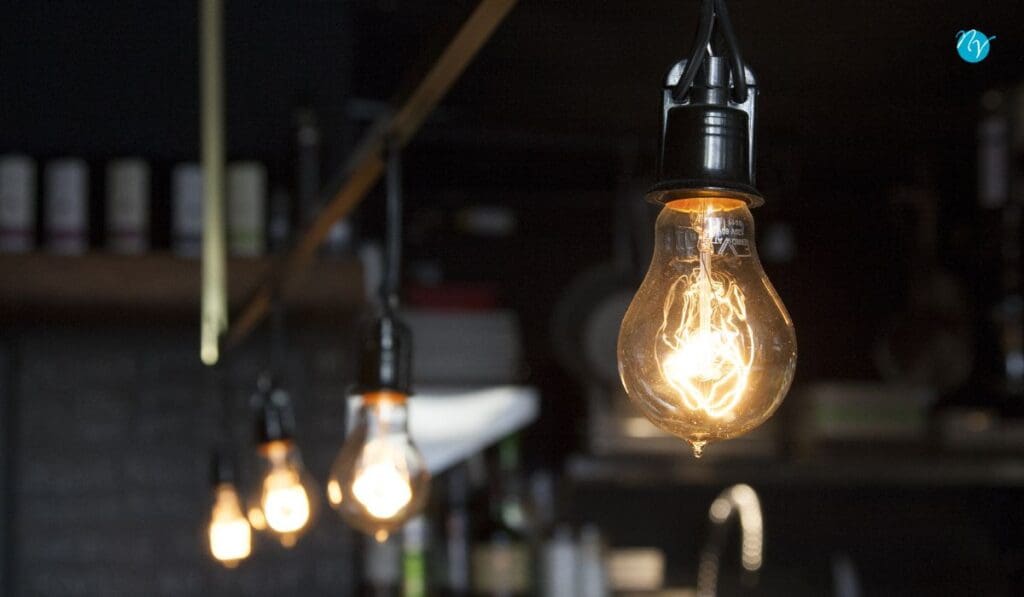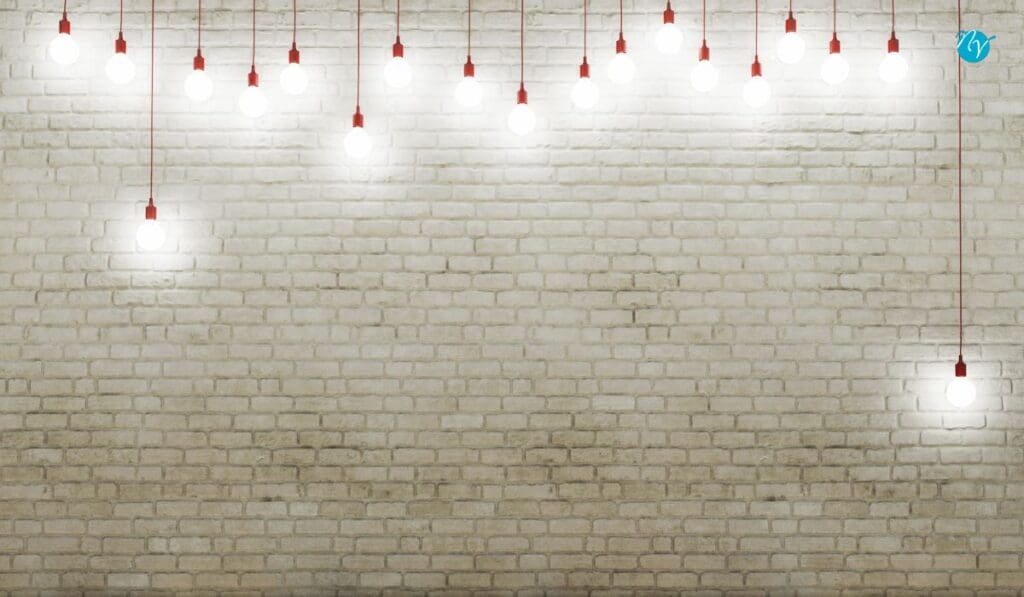The right landscape lighting can transform your outdoor spaces, enhancing the beauty of your home and providing functional illumination for various activities.
One of the crucial elements in landscape lighting is the choice of light bulbs.
Selecting the best landscape light bulb involves considering factors such as brightness, color temperature, energy efficiency, and durability.
In this guide, we will explore these factors to help you make an informed decision on how to choose the best landscape light bulb for your home.
Brightness and Lumens
The brightness of a light bulb is measured in lumens.
Different outdoor areas may require varying levels of brightness depending on their purpose.
Pathways and accent lighting may require lower lumens, while task lighting in specific areas, like a patio or deck, may need higher lumens.
Consider the intended use of the lighting to determine the appropriate brightness level for each space.
Color Temperature
Color temperature is another critical factor to consider when choosing landscape light bulbs.
It is measured in Kelvin (K) and represents the warmth or coolness of the light emitted.
Warmer color temperatures (around 2700K) produce a soft, yellow light that is often preferred for creating a cozy and inviting atmosphere.
On the other hand, cooler color temperatures (5000K and above) emit a bright, white light suitable for security lighting and task-oriented areas.
Energy Efficiency
Opting for energy-efficient landscape light bulbs not only reduces electricity costs but also contributes to environmental sustainability.
LED (Light Emitting Diode) bulbs are a popular choice for landscape lighting due to their energy efficiency and long lifespan.
While LED bulbs may have a higher upfront cost, their longevity and energy savings make them a cost-effective choice in the long run.
Durability and Weather Resistance
Outdoor lighting is exposed to the elements, so it’s crucial to choose light bulbs that can withstand various weather conditions.
Look for bulbs labeled as weather-resistant or suitable for outdoor use.
LEDs are again a great option as they are durable, resistant to shock and vibration, and operate well in a wide range of temperatures.
Bulb Type
Different landscape lighting fixtures may require specific bulb types.
Common options include traditional incandescent bulbs, halogen bulbs, and LED bulbs. LED bulbs are highly versatile and compatible with most landscape lighting fixtures.

They come in various shapes and sizes, providing flexibility in design and functionality.
Smart Lighting Options
For added convenience and control, consider smart lighting options.
Smart landscape light bulbs can be controlled remotely through a smartphone or home automation system, allowing you to adjust brightness levels, set schedules, and even change color temperatures.
This provides a high level of customization and can enhance both aesthetics and security.
Cost Considerations
While considering various factors, it’s important to weigh the costs associated with different types of landscape light bulbs.
LED bulbs may have a higher initial cost, but their energy efficiency and long lifespan often make them more cost-effective in the long run.
Evaluate your budget and the overall value each type of bulb provides in terms of energy savings and longevity.
Compatibility with Fixtures
Before purchasing landscape light bulbs, ensure they are compatible with your existing fixtures.
Different fixtures may require specific types or sizes of bulbs.
Check the manufacturer’s guidelines for each fixture and choose bulbs that meet the recommended specifications.
This ensures optimal performance and prevents potential issues with installation or operation.
Dimmability
If you desire the ability to adjust the brightness of your landscape lighting, consider dimmable bulbs.
Not all landscape light bulbs are compatible with dimmer switches, so check the product specifications to ensure they support dimming functionality.
Dimmable bulbs offer flexibility, allowing you to create the desired ambiance for different occasions or activities.
Warranty and Customer Reviews
When selecting landscape light bulbs, it’s advisable to check for warranties provided by manufacturers.
A longer warranty period can indicate the manufacturer’s confidence in the bulb’s durability and performance.
Additionally, reading customer reviews can offer valuable insights into the real-world experiences of other homeowners.
Look for feedback on factors like reliability, longevity, and overall satisfaction with the light bulbs you are considering.
Environmental Impact
Consider the environmental impact of your choice of light bulbs.
LED bulbs, in addition to being energy-efficient, contain fewer hazardous materials compared to traditional incandescent bulbs.
They are also recyclable.
By choosing environmentally friendly options, you contribute to reducing your carbon footprint and supporting sustainable practices.
Professional Consultation
For complex landscape lighting projects or if you’re uncertain about which light bulbs to choose, consider seeking professional advice.
Lighting professionals can assess your specific needs, recommend suitable products, and ensure proper installation.
Their expertise can help you achieve the desired lighting effects while maximizing energy efficiency and longevity.
Aesthetics and Design
The aesthetic appeal of your landscape lighting is a crucial factor in enhancing the overall ambiance of your outdoor spaces.
Different light bulbs emit varying qualities of light, affecting the visual impact.
Experiment with different color temperatures and bulb styles to achieve the desired atmosphere.
Additionally, consider the design of the bulbs themselves, as some may be more visually appealing or discreet than others.
Regulatory Compliance
Be aware of any local regulations or restrictions regarding outdoor lighting.
Some areas may have specific guidelines regarding the type of bulbs, brightness levels, or even color temperatures allowed for outdoor use.
Ensuring compliance with local regulations not only avoids potential fines but also promotes responsible and considerate outdoor lighting practices in your community.
Trial and Error
If you’re uncertain about the best landscape light bulbs for your specific needs, consider a trial-and-error approach.
Purchase a few different types of bulbs and test them in different areas of your outdoor space.
This hands-on experimentation allows you to observe the actual performance, color rendering, and overall effect of the light before committing to a complete installation.
Long-Term Vision
When choosing landscape light bulbs, think about your long-term vision for your outdoor space.
 Consider any future changes or expansions to your landscaping that might impact your lighting needs.
Consider any future changes or expansions to your landscaping that might impact your lighting needs.
Opting for versatile and adaptable lighting solutions can accommodate future adjustments without the need for a complete overhaul of your lighting setup.
Conclusion
Selecting the best landscape light bulb for your home is a comprehensive process that involves considering various factors, including installation, maintenance, aesthetics, regulatory compliance, and long-term vision.
By carefully assessing your specific requirements and priorities, you can make informed decisions that not only meet your immediate lighting needs but also contribute to the long-term sustainability and visual appeal of your outdoor spaces.
If you have further questions or need professional guidance on choosing the right landscape light bulbs for your home, don’t hesitate to reach out to experts.
Contact NightVision Outdoor Lighting for personalized assistance and insights tailored to your specific outdoor lighting needs.
Whether you’re looking for energy-efficient solutions, smart lighting options, or expert installation advice, the team at NV Lighting is ready to help you illuminate your outdoor space effectively and beautifully.
FAQs
What factors should I consider when choosing landscape light bulbs?
Consider factors such as brightness, color temperature, energy efficiency, durability, bulb type, smart lighting options, cost, compatibility with fixtures, dimmability, warranty, customer reviews, environmental impact, professional consultation, aesthetics, regulatory compliance, trial and error, and long-term vision.
How do I determine the appropriate brightness for different outdoor areas?
Evaluate the purpose of each space. Pathways and accent lighting may need lower lumens, while task lighting in areas like a patio may require higher lumens.
What is color temperature, and how does it affect the lighting atmosphere?
Color temperature, measured in Kelvin (K), determines the warmth or coolness of light. Warmer temperatures (around 2700K) create a cozy atmosphere, while cooler temperatures (5000K and above) are suitable for security lighting and task-oriented areas.
Why choose LED bulbs for landscape lighting?
LED bulbs are energy-efficient, have a long lifespan, and are durable. Despite a higher upfront cost, their longevity and energy savings make them a cost-effective choice in the long run.
How can I ensure weather resistance in outdoor light bulbs?
Look for bulbs labeled as weather-resistant or suitable for outdoor use. LEDs are a great option as they are durable, resistant to shock and vibration, and operate well in various temperatures.
Are smart lighting options worth considering for landscape lighting?
Smart landscape light bulbs offer convenience and control, allowing you to adjust brightness levels, set schedules, and change color temperatures through a smartphone or home automation system.
What role does dimmability play in landscape lighting?
Dimmable bulbs provide flexibility in adjusting brightness levels. Check product specifications to ensure compatibility with dimmer switches.
How do I ensure compatibility with my existing fixtures?
Check the manufacturer’s guidelines for each fixture and choose bulbs that meet the recommended specifications to ensure optimal performance and prevent installation or operational issues.
Why is it important to consider the environmental impact of light bulbs?
LED bulbs are not only energy-efficient but also contain fewer hazardous materials compared to traditional bulbs. Choosing environmentally friendly options contributes to reducing your carbon footprint.
Why should I consider professional consultation for landscape lighting projects?
Lighting professionals can assess specific needs, recommend suitable products, and ensure proper installation, maximizing energy efficiency and longevity.



